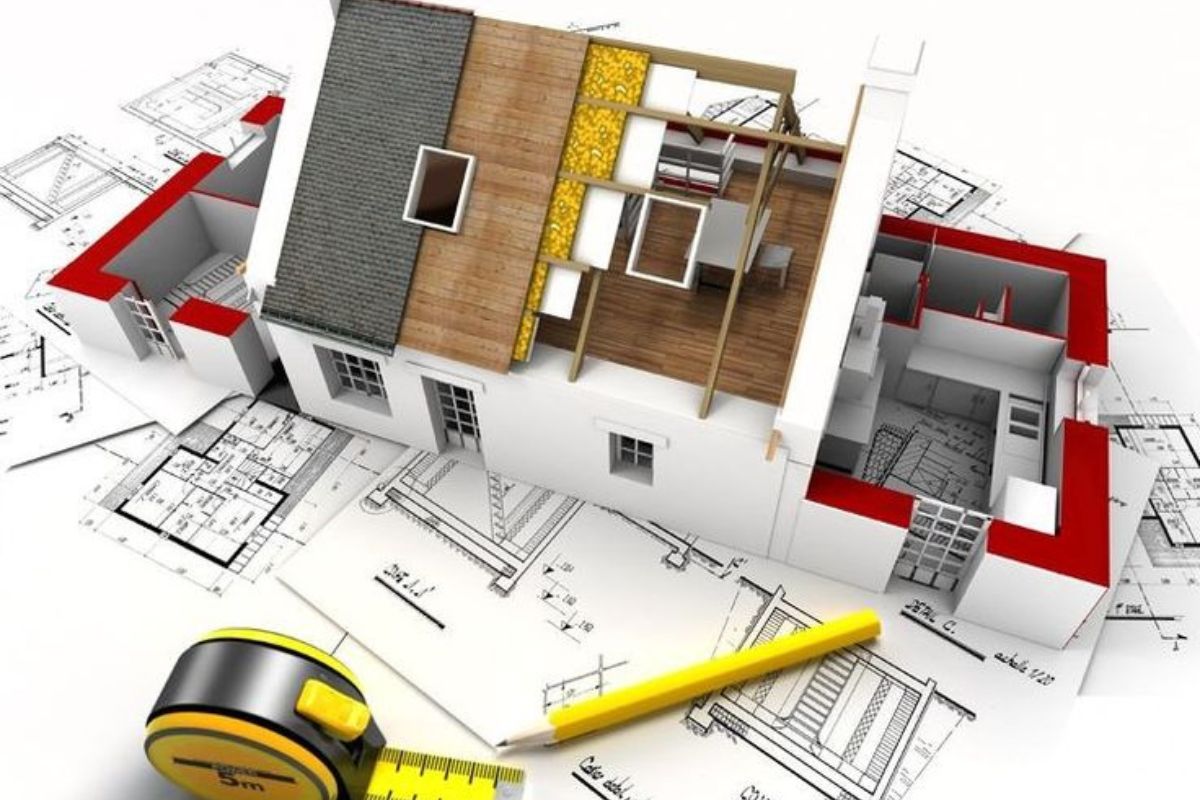
Home improvement is a vast field encompassing various aspects of renovating, remodeling, and upgrading your living space. Understanding the terminology used in home improvement can significantly ease communication with contractors, architects, and DIY enthusiasts. This comprehensive guide will explore essential home improvement terms, ensuring you are well-versed in the language of home upgrades.
Introduction to Home Improvement Terms
Home improvement is not just about making your living space more aesthetically pleasing; it also involves enhancing functionality, increasing property value, and ensuring safety. Whether you are a homeowner planning a DIY project or someone looking to hire professionals, knowing the right home improvement terms can help you articulate your vision clearly and understand the process better.
Key Home Improvement Terms You Should Know
1. Blueprint
A blueprint is a detailed architectural drawing that outlines the design, dimensions, and specifications of a building project. It serves as a guide for contractors and builders, ensuring that the project is executed according to plan.
2. Load-Bearing Wall
A load-bearing wall supports the weight of the structure above it, including the roof and upper floors. Removing or altering a load-bearing wall requires careful planning and the addition of alternative support structures, such as beams or columns.
3. Drywall
Drywall, also known as gypsum board or plasterboard, is a construction material used to create interior walls and ceilings. It is made from gypsum plaster sandwiched between two layers of thick paper and is a popular choice for its ease of installation and finish.
4. Footprint
The footprint of a building refers to the total area that it covers on the ground. This term is crucial when planning expansions or new constructions, as it impacts zoning laws and building codes.
5. Egress
Egress refers to a means of exiting a building or room, especially in emergencies. Building codes often require specific egress windows or doors in basements and bedrooms for safety purposes.
6. R-Value
The R-value measures the thermal resistance of insulation materials. A higher R-value indicates better insulation, which is essential for maintaining energy efficiency in a home.
7. Underlayment
Underlayment is a layer of material installed between the subfloor and the finished floor. It provides a smooth surface, reduces noise, and adds insulation. Common types of underlayment include foam, cork, and felt.
8. Joist
A joist is a horizontal structural element that supports the floor or ceiling. Joists are typically made of wood, steel, or engineered lumber and are crucial for maintaining the integrity of the structure.
9. Facade
The facade is the front or face of a building, often designed for aesthetic appeal. It includes elements like doors, windows, and architectural details that enhance the building’s curb appeal.
10. HVAC
HVAC stands for Heating, Ventilation, and Air Conditioning. This system regulates indoor temperature, humidity, and air quality, ensuring a comfortable living environment.
11. Punch List
A punch list is a document created towards the end of a construction project that outlines incomplete or unsatisfactory work. Contractors use this list to address and finalize any remaining issues before project completion.
12. Soffit
The soffit is the underside of a roof overhang or eave. It provides ventilation to the attic and helps protect the roof’s structural integrity by preventing moisture buildup.
13. Caulk
Caulk is a flexible material used to seal gaps and cracks in buildings. It prevents air, water, and pests from entering and is commonly used around windows, doors, and plumbing fixtures.
14. Flashing
Flashing is a thin material, typically made of metal, installed to prevent water penetration at joints and seams in a building. It is commonly used around chimneys, vents, and roof valleys.
15. Crown Molding
Crown molding is decorative trim installed where the ceiling meets the walls. It adds an elegant touch to rooms and can conceal imperfections in the joint.
16. Permit
A permit is an official document issued by local authorities that grants permission to carry out specific construction or renovation work. Obtaining the necessary permits ensures that the project complies with building codes and regulations.
17. Subfloor
The subfloor is the structural layer beneath the finished flooring material. It provides a solid foundation and support for the floor covering, ensuring durability and stability.
18. Tread and Riser
In stair construction, the tread is the horizontal part you step on, while the riser is the vertical part between each tread. Proper design and installation of treads and risers are essential for safe and comfortable stair usage.
19. Trim
Trim refers to the finishing materials used around windows, doors, and other openings to cover gaps and joints. It includes baseboards, casings, and chair rails, adding a polished look to interiors.
20. VOC
VOC stands for Volatile Organic Compounds, which are chemicals found in many building materials and finishes. High levels of VOCs can affect indoor air quality, so choosing low-VOC products is crucial for a healthier home environment.
The Importance of Home Improvement Terms in Planning and Execution

Understanding home improvement terms is essential for effective communication with contractors, architects, and suppliers. It allows you to articulate your ideas clearly, understand technical aspects of the project, and make informed decisions.
Enhancing Communication with Professionals
When discussing your project with professionals, using the correct home improvement terms ensures that everyone is on the same page. It reduces the risk of misunderstandings and ensures that your vision is accurately conveyed.
Making Informed Decisions
Knowledge of home improvement terms helps you make informed decisions about materials, techniques, and designs. For instance, knowing the difference between load-bearing and non-load-bearing walls can influence your choices when planning a renovation.
Ensuring Compliance with Regulations
Home improvement projects often require compliance with local building codes and regulations. Understanding terms like permits, egress, and R-value helps ensure that your project meets these standards, avoiding potential legal and safety issues.
Frequently Asked Questions (FAQs) about Home Improvement Terms
1. What is the difference between a blueprint and a floor plan?
A blueprint is a detailed architectural drawing that includes all aspects of a building’s design, including structural elements, electrical systems, and plumbing. A floor plan, on the other hand, is a type of blueprint that focuses specifically on the layout of rooms and spaces within the building.
2. Why is the R-value important in home improvement?
The R-value measures the thermal resistance of insulation materials. A higher R-value indicates better insulation, which helps maintain a comfortable indoor temperature and improves energy efficiency. This can lead to lower heating and cooling costs and a more sustainable home.
3. What should be included in a punch list?
A punch list should include any incomplete or unsatisfactory work observed towards the end of a construction project. This can range from minor cosmetic issues, like paint touch-ups, to more significant tasks, such as fixing structural problems. The contractor addresses these items to ensure the project is completed to the client’s satisfaction.
4. How does flashing prevent water damage?
Flashing is installed at joints and seams in a building to direct water away from vulnerable areas. By preventing water penetration, flashing helps protect the structural integrity of the building and prevents issues like mold, rot, and leaks.
5. What are VOCs, and why should I be concerned about them?
VOCs, or Volatile Organic Compounds, are chemicals found in many building materials and finishes, such as paints, adhesives, and sealants. High levels of VOCs can negatively impact indoor air quality, leading to health issues like headaches, respiratory problems, and allergic reactions. Choosing low-VOC products can improve indoor air quality and create a healthier living environment.
Conclusion
Understanding home improvement terms is a crucial aspect of planning and executing any renovation or construction project. This knowledge empowers homeowners to communicate effectively with professionals, make informed decisions, and ensure that their projects comply with regulations. Whether you are tackling a DIY project or working with contractors, being well-versed in these terms will enhance your ability to achieve your home improvement goals successfully.
By familiarizing yourself with these key terms and their implications, you can navigate the complexities of home improvement with confidence and ease.
Website: bighomesinfo.com




